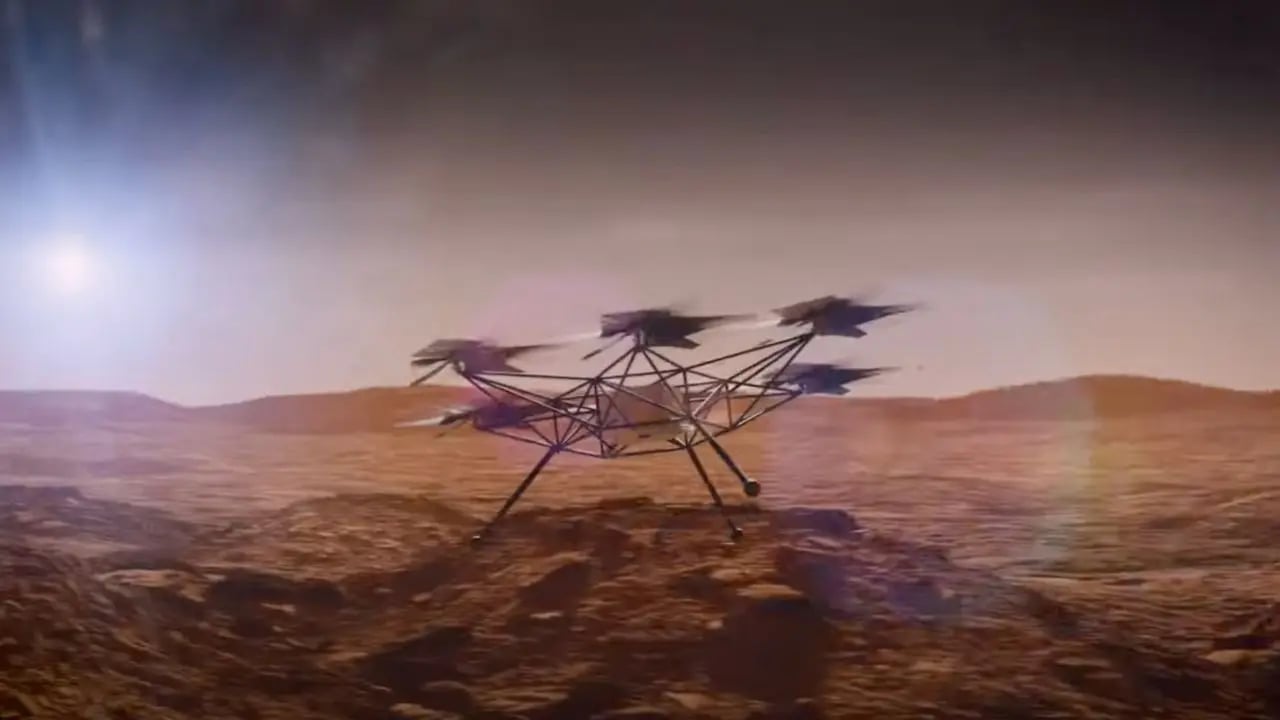The Martian helicopter from NASA guarantees unparalleled vistas of the red planet.
Aerial exploration of Mars will be unlike anything seen before.

In April 2021, the Ingenuity helicopter from NASA flew on Mars, marking a significant milestone in space exploration.
On another planet, the first aircraft to achieve powered, controlled flight was a small, solar-powered rotorcraft.
NASA is now planning to develop a more ambitious aerial explorer for Mars after Ingenuity's successful mission.

Ingenuity's legacy
The Perseverance rover's aerial scout, Ingenuity, surpassed expectations by completing 72 flights in nearly three years, far beyond its original design for five test flights over 30 days.
Ingenuity's mission exceeded expectations by reaching a maximum altitude of 78.7 feet, attaining a top speed of 22.4 mph, and completing a single longest flight of 2,310 feet.

NASA's next-gen Mars helicopter
JPL is currently developing a new Mars helicopter concept that could drastically change the way we explore the red planet, surpassing the capabilities of Ingenuity.
The proposed helicopter boasts six rotors arranged in a hexagonal configuration and is significantly larger, potentially "the size of an SUV." It would be capable of carrying science payloads of up to 11 pounds and covering a range of up to 1.9 miles per Martian day.
This new helicopter's increased size and payload capacity would allow for more extensive scientific investigations and exploration of inaccessible areas on Mars, enabling scientists to study large swaths of Martian terrain in detail and quickly.

Overcoming challenges
To enable the upcoming helicopter to fly on Mars, NASA must tackle the difficulties encountered by Ingenuity during its crash landing in 2024. The smaller helicopter's crash landing provided valuable insights for future designs, particularly in terms of navigation in featureless terrain.
The vision-based navigation system of Ingenuity had difficulty navigating on the sandy, rippled surface of Jezero Crater due to the lack of surface texture, which provided insufficient information for the system to work with. NASA engineer Håvard Grip explained this issue.
The next-generation helicopter is likely to have advanced navigation systems that can operate in diverse Martian terrains.

Technological advancements
NASA is developing new carbon fiber rotor blades for future Mars helicopters, which are 4 inches longer than those used on Ingenuity.
NASA's next-generation blades have been rigorously tested and can reach speeds of up to 3,500 rpm, 750 rpm faster than Ingenuity's maximum speed. The new design promises improved efficiency and performance in Mars' thin atmosphere, allowing for larger and more capable helicopters for future missions. This represents a significant advancement in NASA's ongoing efforts to explore the red planet from the air.

Kurt's key takeaways
Mars aerial vehicles could be instrumental in preparing for human missions to Mars. They can help identify suitable landing sites, gather detailed information about the Martian environment, and potentially support future astronauts on the surface. The advancement of Mars helicopters highlights the rapid progress in space technology. From a daring experiment with Ingenuity to a valuable tool for planetary exploration, this technology is evolving rapidly.
Are advancements in Mars exploration, such as the new helicopter, crucial for our comprehension of the universe and the possibility of life beyond Earth, or should our resources be directed towards resolving pressing issues on Earth? Please share your thoughts by writing to Cyberguy.com/Contact.
To receive my tech tips and security alerts, subscribe to my free CyberGuy Report Newsletter at Cyberguy.com/Newsletter.
Follow Kurt on his social channels
Answers to the most asked CyberGuy questions:
New from Kurt:
Copyright 2025 CyberGuy.com. All rights reserved.
tech

15 things to do or try first when you get a new iPhone: 1. Set up your phone with your personal information and preferences. 2. Install your favorite apps and games. 3. Connect your phone to your Wi-Fi network and other devices. 4. Take a few photos and test out the camera. 5. Set up your email and other accounts. 6. Enable security features like Touch ID or Face ID. 7. Customize your phone's settings and appearance. 8. Explore the built-in features and apps on your phone. 9. Connect with friends and family on social media. 10. Set up reminders and alarms. 11. Use the phone's built-in voice assistant. 12. Download and install new apps from the App Store. 13. Set up your phone's screen time and parental controls. 14. Enable automatic updates for your apps and software. 15. Back up your important data to cloud storage or an external hard drive.
techYou might also like
- Five top home inventory apps to safeguard your property during an emergency
- Your smart home gadgets will soon receive a new security seal of approval.
- This year, save time, privacy, and money with these 10 tech upgrades.
- Is your Windows 11 PC frequently restarting? Let's resolve this annoying issue.
- Sony's entry into the electric vehicle market is a surprising move.


















